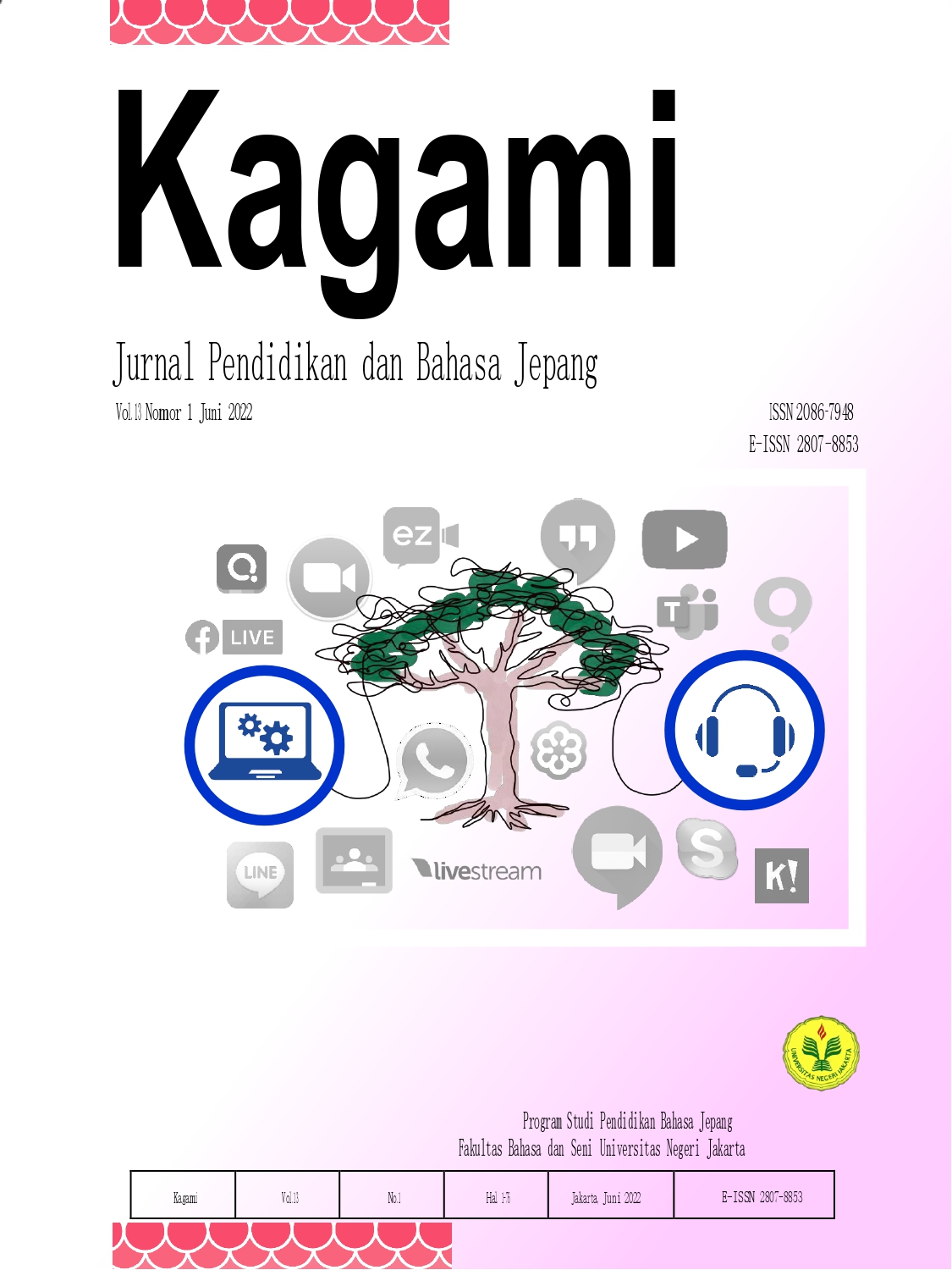Analisis Makna Fukugoudoushi Verba Yoru (寄る) Dalam Novel Dan Situs Daring
Kata Kunci:
fukugoudoushi, semantics, yoru verbsAbstrak
The purpose of this study was to examine the semantic meaning in fukugoudoushi verb yoru (寄る) contained in Japanese sentences and to find out the type of words that follow and are followed by the verb yoru (寄る). The reason behind this study is because the vocabulary of toshiyoru has the meaning of aging, even though when viewed from the word that makes up the vocabulary, namely the word yoru (寄る) based on the dictionary of kokugo jiten, it does not have an element of the meaning of aging. This research data analysis technique uses the agih method. The study used data found from the novel Hidamari no Kanojo and the online site called Naver Matome. Based on the results of the analysis from 22 data it found, five data that have ordinary nouns, i-adjectives is one data. Then, based on 16 verb data is it found six data with the type keizokusei no doushi, five data with the type joutai no doushi, three data with shunkansei no doushi type and one data with jidoushi type. Then, there are six meanings which is three data that shows the meaning of “leaning”, 13 data that shows the meaning of “approaching” ,one data that shows the meaning of “stopping by”, two data that shows the meaning “gathering”, two data that shows the meaning “dropping the opponent to the outside of the arena in a sumo match”, and two data that shows the meaning “multiply”. It can be seen that the meaning of closer is found more in Japanese sentences.
Referensi
Darmadi, Hamid. 2013. Metode Penelitian Pendidikan dan Sosial. Bandung: Alfabeta.
Departemen Pendidikan dan Kebudayaan. 2016.Kamus Besar Bahasa Indonesia Edisi Kelima. Jakarta : Balai Pustaka.
Haruhiko, Kindaichi. 1995. Nihongo Daijiten. Tokyo: Kodansha
Kyousuke, Kindaichi. 1975. Shinsen Kokugo Jiten. Tokyo : Shogakukan.
Mansoer, Pateda. 1990. Linguistik (sebuah pengantar). Bandung. Angkasa
Matsuura, Kenji. Kamus Jepang-Indonesia. Jakarta: Gramedia Pustaka Utama, 2005.
Nikelas, Syahwin. 2004. Pengantar Linguistik Untuk Guru Bahasa, Jakarta: Departemen Pendidikan dan Kebudayaan, 1988.
Sudaryanto. 2015. Metode dan Aneka Teknik Analisis Bahasa. Yogyakarta: Sanata Dharma University Press.
Sudjianto., Dahidi, Ahmad. 2004. Pengantar Linguistik Bahasa Jepang, Bekasi: Kesaint Blanc.
Toshio, Yamada. 1985. Shinchou Gendai Kokugo Jiten.Tokyo : Shinchosa



